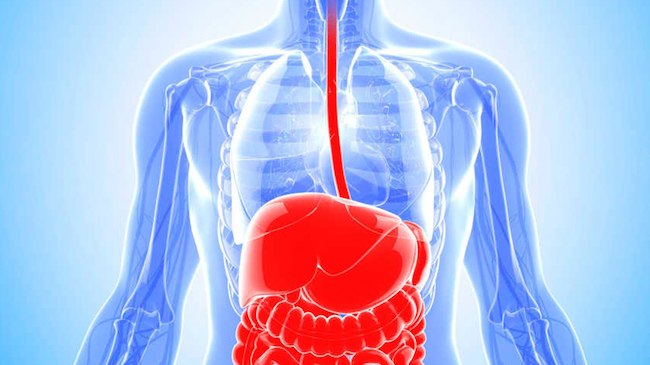Barret's Esophagus

Barrett”s esophagus is a serious complication of GERD, which stands for gastroesophageal reflux disease. In Barrett”s esophagus, normal tissue lining the esophagus -- the tube that carries food from the mouth to the stomach -- changes to tissue that resembles the lining of the intestine. About 10% of people with chronic symptoms of GERD develop Barrett”s esophagus.
Barrett”s esophagus does not have any specific symptoms, although patients with Barrett”s esophagus may have symptoms related to GERD. It does, though, increase the risk of developing esophageal adenocarcinoma, which is a serious, potentially fatal cancer of the esophagus.
Although the risk of this cancer is higher in people with Barrett”s esophagus, the disease is still rare. Less than 1% of people with Barrett”s esophagus develop this particular cancer. Nevertheless, if you”ve been diagnosed with Barrett”s esophagus, it”s important to have routine examinations of your esophagus. With routine examination, your doctor can discover precancerous and cancer cells early, before they spread and when the disease is easier to treat.
What Is GERD and How Does It Relate to Barrett”s Esophagus?
Esophagus Treatments
People with GERD may experience symptoms such as heartburn, a sour, burning sensation in the back of the throat, chronic cough, laryngitis, and nausea.
When you swallow food or liquid, it automatically passes through the esophagus, which is a hollow, muscular tube that runs from your throat to your stomach. The lower esophageal sphincter, a ring of muscle at the end of the esophagus where it joins the stomach, keeps stomach contents from rising up into the esophagus.
The stomach produces acid in order to digest food, but it is also protected from the acid it produces. With GERD, stomach contents flow backward into the esophagus. This is known as reflux.
Most people with acid reflux don”t develop Barrett”s esophagus. But in patients with frequent acid reflux, the normal cells in the esophagus may eventually be replaced by cells that are similar to cells in the intestine to become Barrett”s esophagus.
Does GERD Always Cause Barrett”s Esophagus?
No. Not everyone with GERD develops Barrett”s esophagus. And not everyone with Barrett”s esophagus had GERD. But long-term GERD is the primary risk factor.
Anyone can develop Barrett”s esophagus, but white males who have had long-term GERD are more likely than others to develop it. Other risk factors include the onset of GERD at a younger age and a history of current or past smoking.
How Is Barrett”s Esophagus Diagnosed?
Because there are often no specific symptoms associated with Barrett”s esophagus, it can only be diagnosed with an upper endoscopy and biopsy. Guidelines from the American Gastroenterological Association recommend screening in people who have multiple risk factors for Barrett”s esophagus. Risk factors include age over 50, male sex, white race, hiatal hernia, long standing GERD, and overweight, especially if weight is carried around the middle.
To perform an endoscopy, a doctor called a gastroenterologist inserts a long flexible tube with a camera attached down the throat into the esophagus after giving the patient a sedative. The process may feel a little uncomfortable, but it isn”t painful. Most people have little or no problem with it.
Once the tube is inserted, the doctor can visually inspect the lining of the esophagus. Barrett”s esophagus, if it”s there, is visible on camera, but the diagnosis requires a biopsy. The doctor will remove a small sample of tissue to be examined under a microscope in the laboratory to confirm a diagnosis.
The sample will also be examined for the presence of precancerous cells or cancer. If the biopsy confirms the presence of Barrett”s esophagus, your doctor will probably recommend a follow-up endoscopy and biopsy to examine more tissue for early signs of developing cancer.
If you have Barrett”s esophagus but no cancer or precancerous cells are found, the doctor will still most likely recommend that you have periodic repeat endoscopy. This is a precaution, because cancer can develop in Barrett tissue years after diagnosing Barrett”s esophagus. If precancerous cells are present in the biopsy, your doctor will discuss treatment and surveillance options with you.
Can Barrett”s Esophagus Be Treated?
One of the primary goals of treatment is to prevent or slow the development of Barrett”s esophagus by treating and controlling acid reflux. This is done with lifestyle changes and medication. Lifestyle changes include taking steps such as:
-
Make changes in your diet. Fatty foods, chocolate, caffeine, spicy foods, and peppermint can aggravate reflux.
-
Avoid alcohol, caffeinated drinks, and tobacco.
-
Lose weight. Being overweight increases your risk for reflux.
-
Sleep with the head of the bed elevated. Sleeping with your head raised may help prevent the acid in your stomach from flowing up into the esophagus.
-
Don”t lie down for 3 hours after eating.
-
Take all medicines with plenty of water.
The doctor may also prescribe medications to help. Those medications may include:
Proton pump inhibitors that reduce the production of stomach acid
-
Antacids to neutralize stomach acid
-
H2 blockers that lessen the release of stomach acid
-
Promotility agents -- drugs that speed up the movement of food from the stomach to the intestines
Are There Treatments That Specifically Target Barrett”s Esophagus?
There are several treatments, including surgery, that are designed specifically to focus on the abnormal tissue. They include:
A diagnosis of Barrett”s esophagus is not a cause for major alarm. Barrett”s esophagus, however, can lead to precancerous changes in a small number of people and has an increased risk for cancer. So, a diagnosis is a reason to work with your doctor to be watchful of your health


